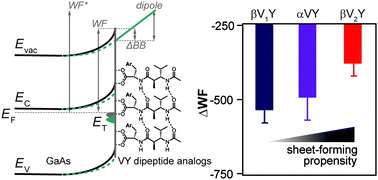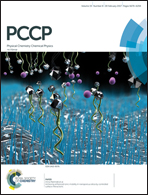Peptide-functionalized semiconductor surfaces: strong surface electronic effects from minor alterations to backbone composition†
Abstract
The use of non-canonical amino acids is a powerful way to control protein structure. Here, we show that subtle changes to backbone composition affect the ability of a dipeptide to modify solid surface electronic properties. The extreme sensitivity of the interactions to the peptide structure suggests potential applications in improving the performance of electronic devices.



 Please wait while we load your content...
Please wait while we load your content...